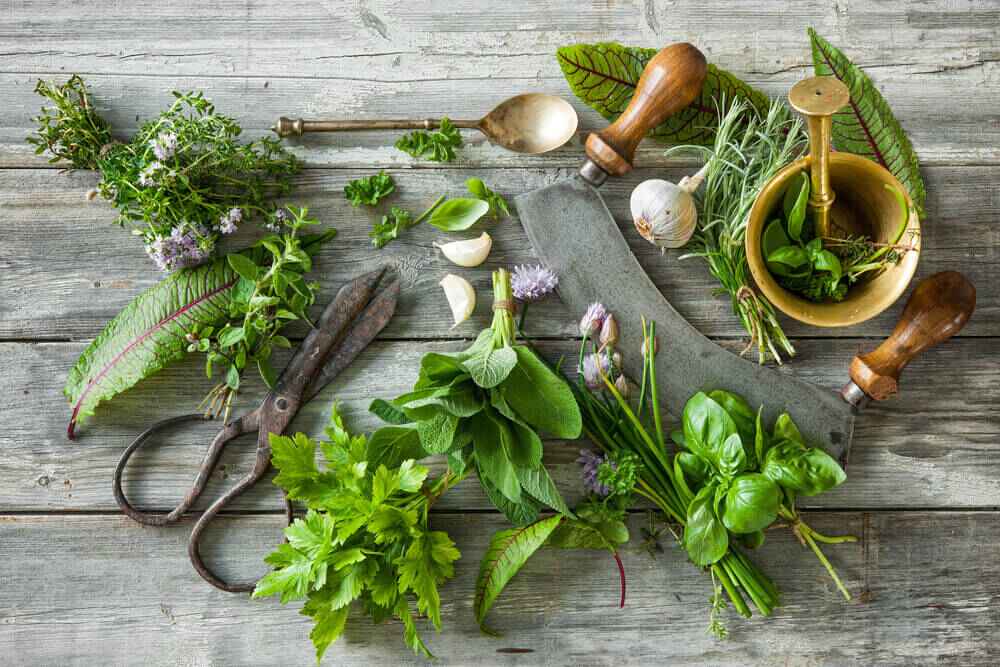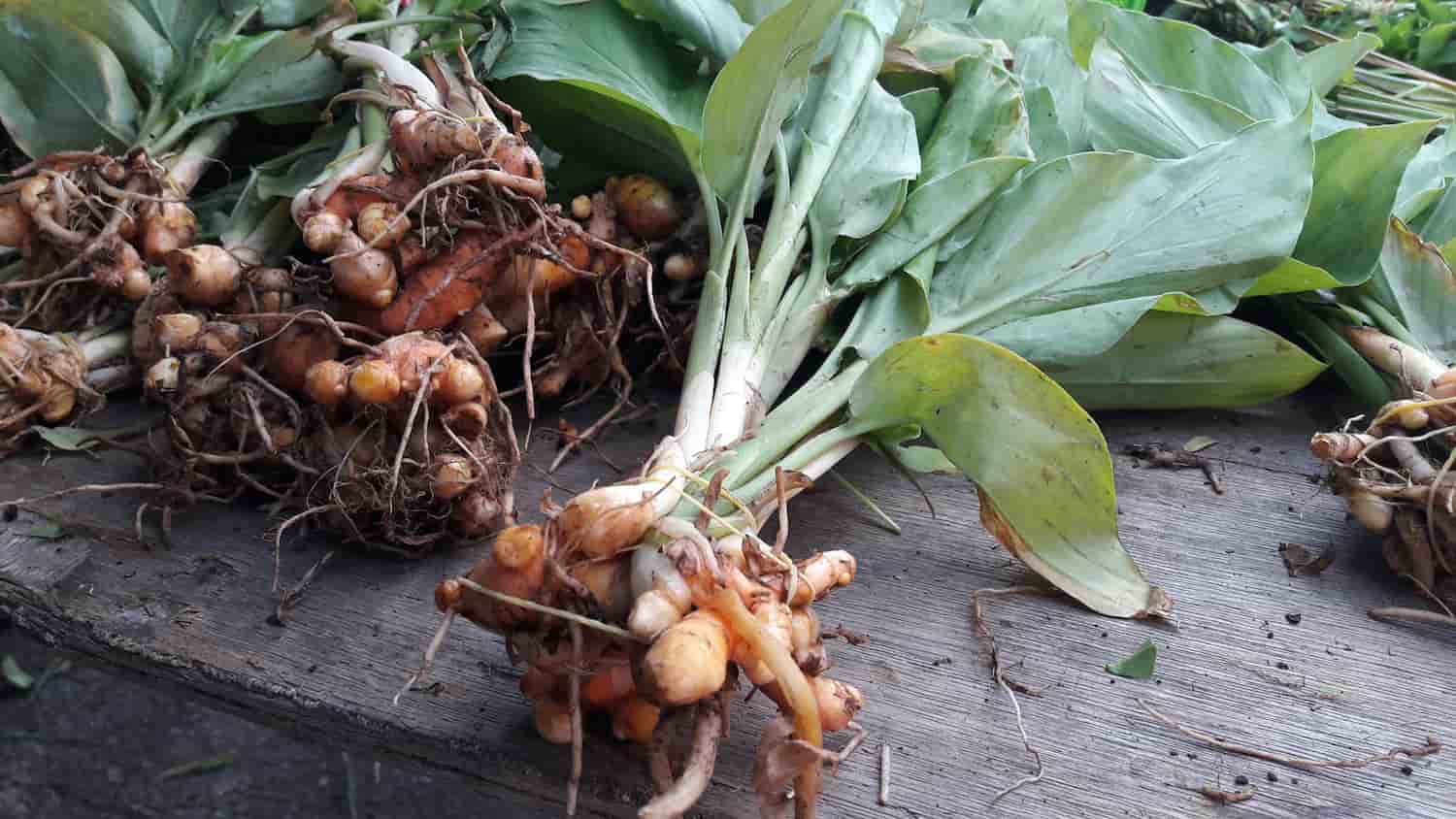As we transition from winter to spring, many of us also shift our eating habits and our health regimens, and we may rev up our workout routines in preparation for the summer months. Turmeric, our March Herb of the Month, is the perfect ally to help us adapt and transform along with the changing seasons.
Botanical Description
Turmeric (Curcuma longa) is best known for its inner beauty. Its outer appearance is alike to that of Ginger; both are rhizomes (similar to a roots) and belong to the Zingiberaceae family. Turmeric has a brownish/orange color, but when you cut it open, you reveal its beautifully bright and glowing yellow/orange inside! The Turmeric plant is a perennial that can reach three feet in height, with a short stem and long, dark-green leaves. Just under the surface, you find the rhizome, soaking in all those nutrients from the soil. This is the part of the plant that contains the favorable constituents that benefit our bodies.

Turmeric is propagated by cuttings from the rhizome and needs well-drained soil and a humid climate. It is unearthed during the winter season. Turmeric has a very unique smell and taste — it's warm, spicy, savory, and slightly sweet. It can brighten up foods and even your skin! Turmeric's utilizations are multifaceted, ranging from use in culinary recipes and supplements to beauty regimens.
Turmeric's Origin and History
Turmeric is native to India and Asia, but it is now cultivated all throughout the tropics. It relies on lively, nutrient-dense soil and transfers this liveliness to our bodies. The use of Turmeric stems from Vedic culture in India. It is a popular remedy used in Ayurveda, which is a natural system of medicine that originated in India over 3,000 years ago. Ayurveda translates to "Science of Life" and focuses heavily on bringing the body back to homeostasis. Turmeric's role in this is to help cleanse the body, support vitality, and encourage a healthy inflammation response.
Turmeric has its roots deep in Indian culture, where it was used in more than just herbal remedies. It became prominent in Hindu rituals and wedding practices and was used as a blessing offering in ceremonies where Turmeric paste (referred to as Haldi) was placed on the bride and groom. Now that's one renowned plant!

Turmeric powder is also used extensively in Indian cooking. It is one of the main ingredients in traditional curry powder and gives it that rich orange color and robust, earthy flavor. Need to spice up your rice? Turmeric!
Turmeric Functions and Indications
Turmeric's active constituent is called Curcumin. Curcumin is popular and well known for its ability to support our body's inflammation response. Inflammation has its purpose, but sometimes our bodies can overreact. Curcumin supports a healthy inflammation reaction and brings us back to balance. This really comes into play with active individuals and supports the health of our joints and our muscle recovery after a workout. It's also ideal for those who experience joint discomforts.
Some of Turmeric's other stunning benefits include improving liver function, promoting healthy digestion, supporting circulation and heart health, and providing us with overall vitality and everyday health. Need to spice up your life? Turmeric!
Turmeric Uses and Incorporation
One of my favorite characteristics of Turmeric is its versatility. You can make delicious drinks with it, supplement with it, and add it to dishes and homemade skincare products. Here are a few of my favorite ways to incorporate Turmeric:
- Juicing Turmeric with Parsley, green Apple, and Ginger creates a mild yet richly nutritious start to your day.
- Adding Turmeric powder, Cinnamon, Vanilla extract, a dash of Pepper, and a little Honey to a hot Milk (dairy or non-dairy) of your choice makes a dreamy, warm sipping drink referred to as "Golden Milk." It's a perfect to wind down with in the evening.
- Adding a couple pinches of Turmeric powder to sugar or salt and a topical oil of your choice (I like Jojoba), whips up a homemade body scrub that's sure to get your skin glowing.
- Mixing Turmeric powder into a natural lemonade concocts a glowing summer beverage that cools you down and supports your body's natural cleansing abilities and promotes skin health.
- WishGarden's new Exercise & Revive Recovery Aid formula — which includes Turmeric root as its first ingredient — added to a post-workout smoothie or shake is an easy way to support your body's recovery after any activity.
Turmeric Cautions
Turmeric is considered safe and non-toxic. However, pregnant women and people with digestion or gastrointestinal issues, gallbladder issues, or blood-clotting disorders, as well as anyone recovering from surgery or taking prescription medications, should consult with their health practitioner before incorporating Turmeric into their health regimen.
Rebecca Younger aspires to spark an interest in herbs within her community through education and incorporating herbs into everyday life in exciting and innovative ways. She studied Herbal Medicine at Herbalism Roots in Denver. She is a customer journey representative at WishGarden Herbs.
For educational purposes only. This information has not been evaluated by the Food and Drug Administration. This information is not intended to diagnose, treat, cure, or prevent any disease, or sell any product.
Recommended Products
Further Reading











